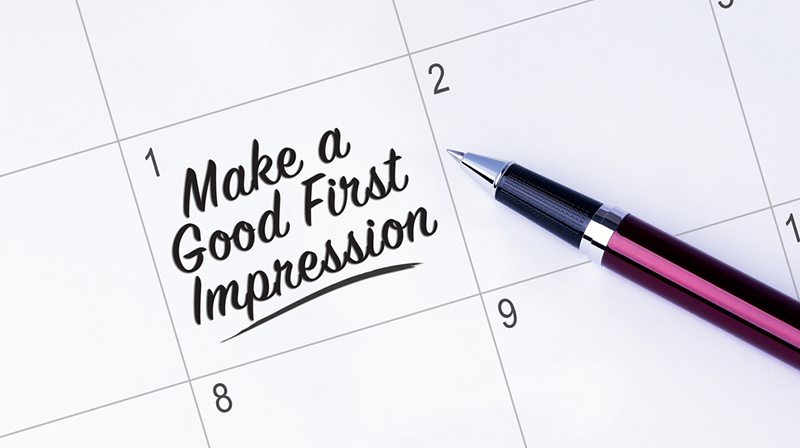
Whether you’re meeting potential clients at a trade show or at a networking event, the first few seconds of your interaction could determine the course of your relationship. According to an article in Forbes Magazine, you only have 7 seconds to make a first impression. During those seven seconds, your prospective client is making a number of conclusions about you. Are you a friend or foe? Are you trustworthy? Are you competent?
If you think you have the entire hour long meeting to convince someone you’re the solution to their problem, you could be missing the mark. Julie Blais Comeau, Chief Etiquette Officer and author of Etiquette: Confidence and Credibility, says the brain is hardwired to make snap decisions, those that we call our “first impression”.
This first impression is based in our genetic programming. “The first impression is based on survival instinct,” says Comeau. When meeting someone for the first time, our brain is making a quick assessment and relying on information from our past to make references to people we already know to try to decide if this person we’re meeting is a friend or foe. These first impressions happen very quickly and are heavily weighted towards nonverbal cues.
Making a good first impression can make a client instantly feel comfortable with you and can be the difference between them willing to do business with you, or not.
Consider Your Brand
Your first impression is your brand. Just as you take the time to consider what you want your company’s brand to be, Comeau recommends setting aside some time before your interaction to plan out the impression you want to make. “One should think what do I want people to say about me when I walk in a room and what do I want the buzz about me to be when I leave the room,” says Comeau.
Decide on three words that you want to focus on; then decide how you are going to show these qualities whether it’s visual or verbal (for example, in a phone call or email conversation).

When you’re getting ready for a meeting, a trade show appearance, or even getting ready to write an email, think about what you want the other person to feel about you. Planning and setting your intention gives you the right energy for that interaction.
Dress for the First Impression
Whether you agree with judging a book from its cover or not, when it comes to in-person first impressions, “we are judged from the outside in,” says Comeau. Wearing branded personalized apparel automatically shows what team you’re part of. Custom apparel that shows off your company’s logo tells people within seconds who you represent, what kind of work you’re in and can also speak to the culture of the organization you represent. Wearing a custom hooded sweatshirt with your company logo screen printed on the full back versus a dress shirt with your company logo embroidered on the left chest will leave a very different impression of your company culture.
Branded custom apparel can give a professional and reassuring first impression. Think about interviewing a tradesperson to do work on your home. One is wearing custom clothing branded with their company logo and one is wearing an unbranded t-shirt. “If that person is wearing branded apparel, right away I feel safe because that person is announcing to me who they are working for, what they’re coming to do. There’s an element of trust that can come from branded apparel,” says Comeau.
Practice Your Posture
Your posture can have a big impact on how you are perceived. Standing tall with your shoulders back and head straight (not too high or too low) projects confidence and competence. You don’t have to be a ballerina to have great posture. Practice your posture when you’re going for a walk or when you’re shopping. Use your eye contact and practice smiling with your eyes.
Smile and Make Eye Contact
Facial expressions are important to making the right first impression. 48 percent of Americans say that a smile is the most memorable feature after first meeting someone. But don’t force a smile to appear on your face. Even a small grin, if it’s authentic, can go a long way to making others feel comfortable around you.

Avoid looking away, which can make you appear distracted and uninterested in the conversation. Maintaining eye contact conveys interest in the conversation and gives a warm feeling of being connected. But, Comeau warns not to be too intense with your eye contact, which can be confused with staring, and can make your subject feel uncomfortable.
Be on Time
Being late for an initial appointment, even by a minute or two, automatically gives a poor impression. Give yourself more time to arrive to the meeting, allowing for traffic delays and any parking hassles.
Turn Off Your Cell Phone
When meeting someone for the first time, avoid likely distractions, including your cell phone. Have you ever walked a trade show floor and seen exhibitors vigorously scrolling through messages on their phones rather than interacting with passersby? Their phone is a barrier to a conversation and sends the message that the person they’re emailing or texting is more important than any of the prospects who could be walking by.







